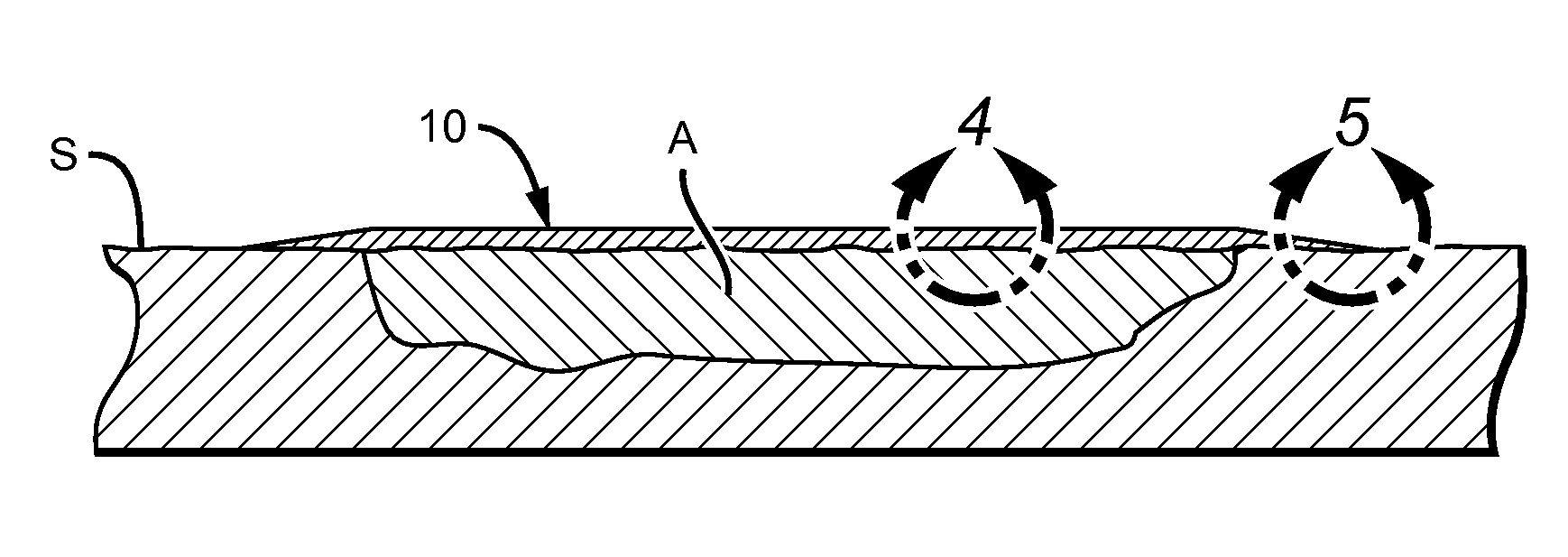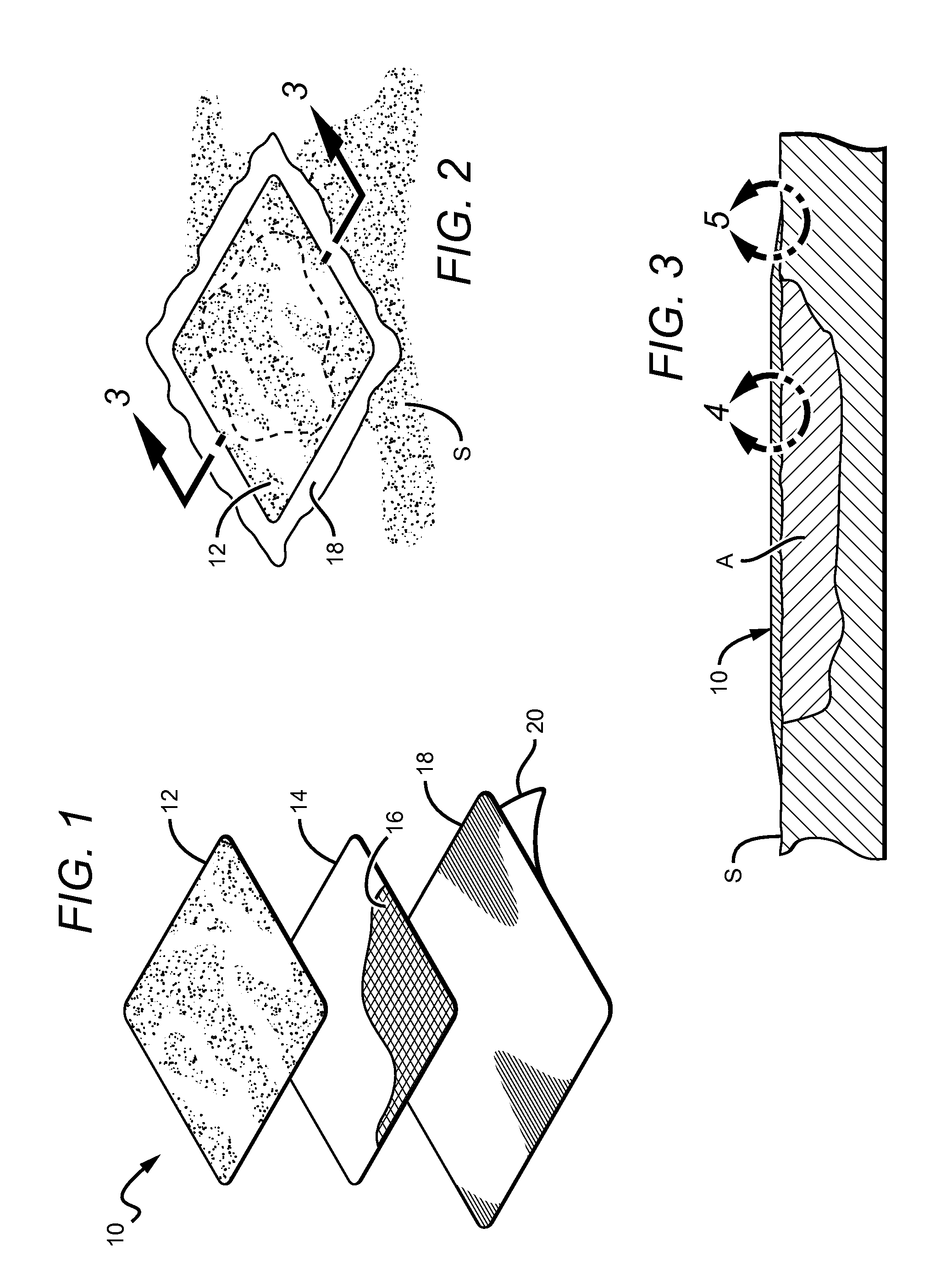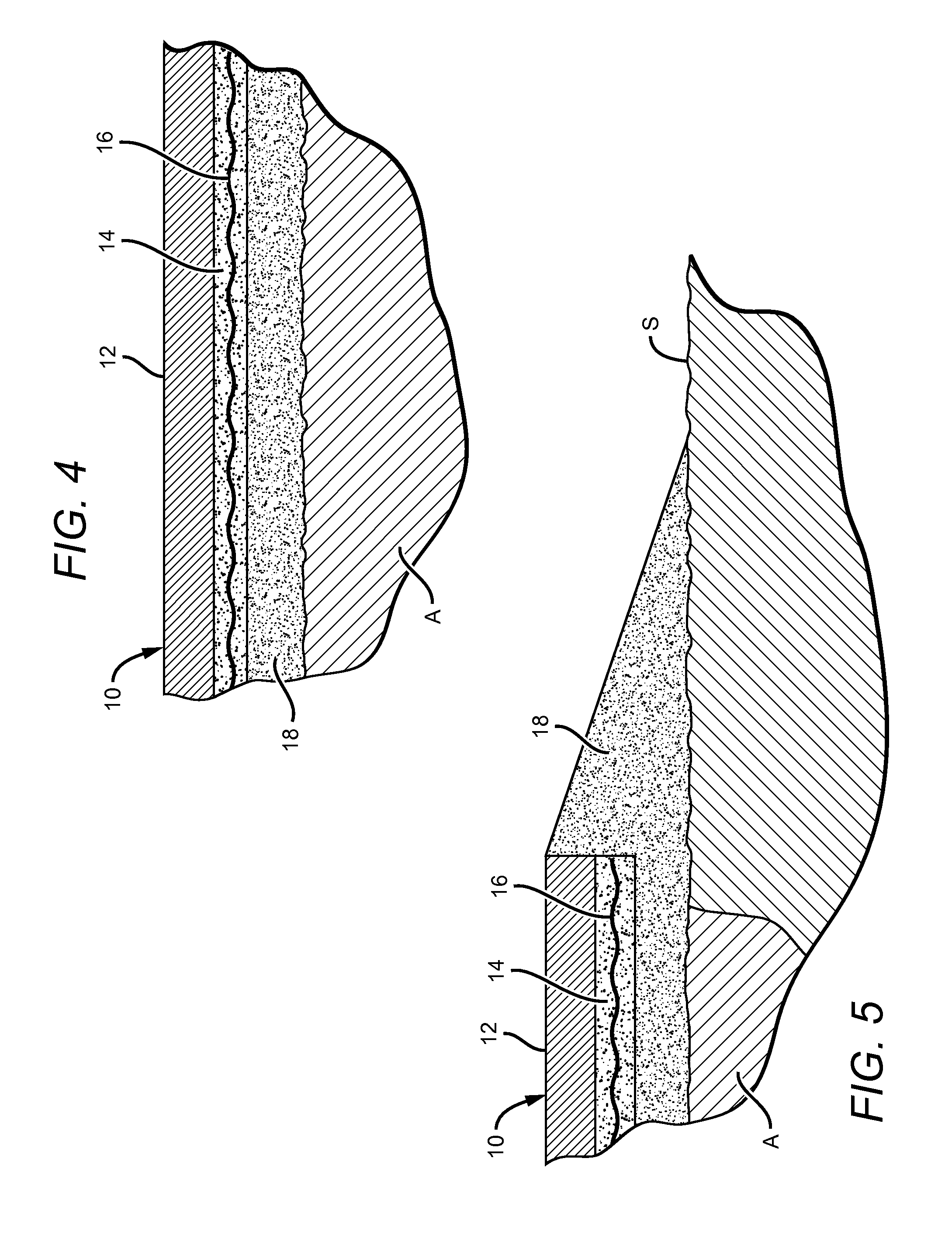Pot hole repair patch and method of installation
- Summary
- Abstract
- Description
- Claims
- Application Information
AI Technical Summary
Benefits of technology
Problems solved by technology
Method used
Image
Examples
Embodiment Construction
[0034]FIG. 1 illustrates my laminated patch 10 for pothole repair. It is to be understood that the figures presented are not to any scale and are provided for a general understanding of the patch structure and method of use.
[0035]As used herein, the term “about” means 10% plus or minus of the stated value.
[0036]Patch 10 has a top wear layer 12 comprising a top surface of stone frit filler embedded in a 1 / 16-⅛ inch thick modified asphalt which could be also reinforced with fiber. A structural reinforcement layer 14 is comprised of viscous bitumen blended with oriented fibrous material and further having encapsulated oriented fibers 16 with an overall layer thickness of about 1 / 16 inch. A bottom sealant layer 18 comprises about ⅛ inch thick bitumen. A peel-off non-stick film backing 20 is affixed to the lower surface of sealant layer 18 and which is removed prior to application.
[0037]FIG. 2 illustrates the position of patch 10 on a road surface S once installation is complete.
[0038]FI...
PUM
| Property | Measurement | Unit |
|---|---|---|
| Thickness | aaaaa | aaaaa |
| Color | aaaaa | aaaaa |
| Viscosity | aaaaa | aaaaa |
Abstract
Description
Claims
Application Information
 Login to View More
Login to View More - R&D
- Intellectual Property
- Life Sciences
- Materials
- Tech Scout
- Unparalleled Data Quality
- Higher Quality Content
- 60% Fewer Hallucinations
Browse by: Latest US Patents, China's latest patents, Technical Efficacy Thesaurus, Application Domain, Technology Topic, Popular Technical Reports.
© 2025 PatSnap. All rights reserved.Legal|Privacy policy|Modern Slavery Act Transparency Statement|Sitemap|About US| Contact US: help@patsnap.com



